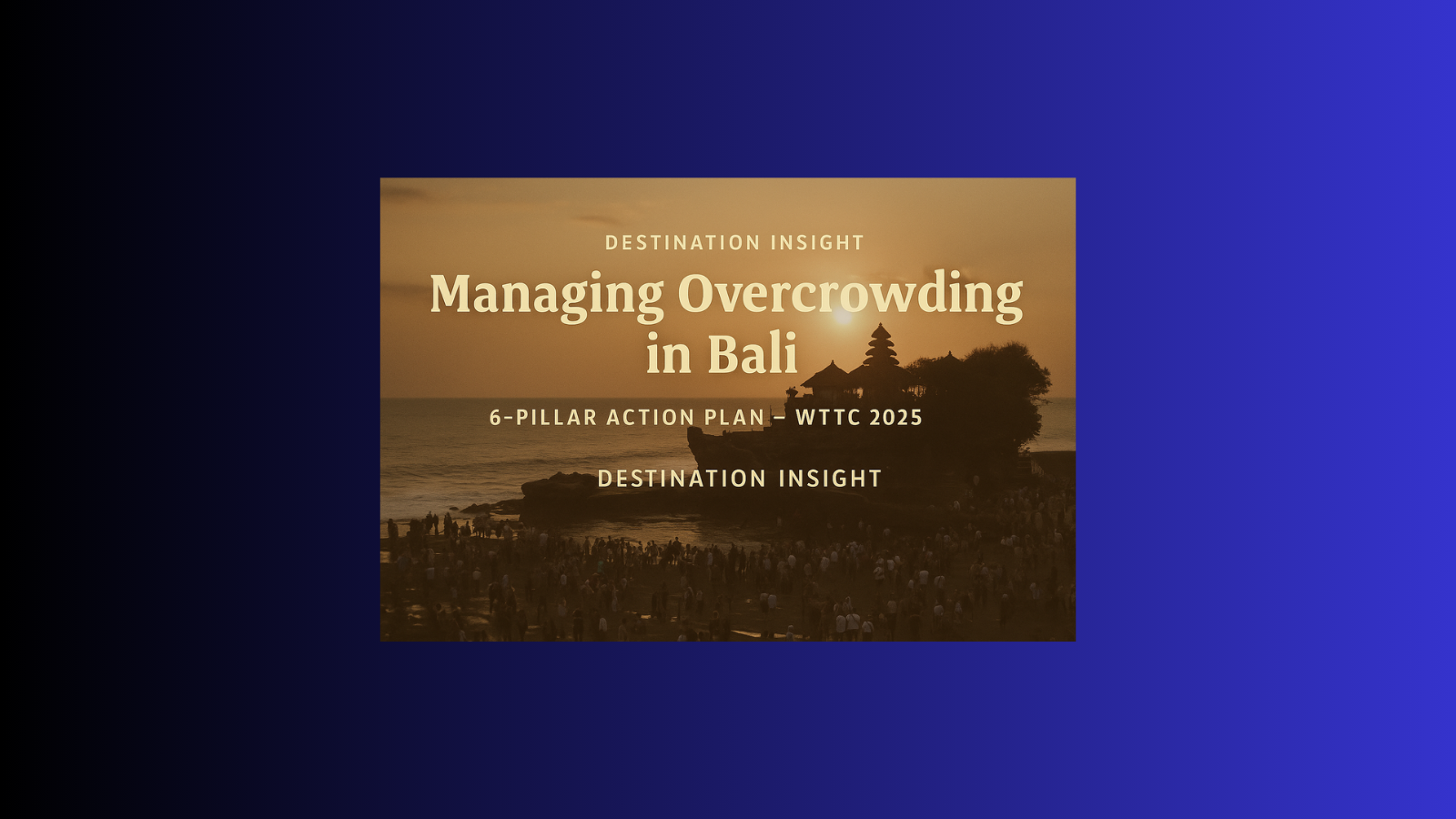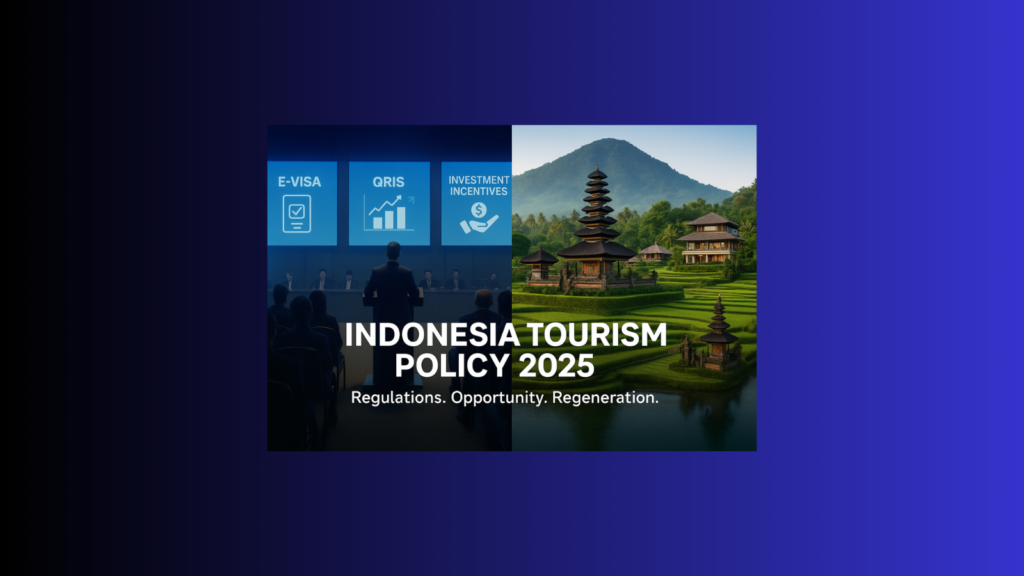Introduction – Why This Matters Now
Overcrowding in Bali tourism has reached a critical tipping point. In 2024, the island welcomed over 6.3 million international visitors, with daily tourist volumes regularly exceeding 60,000 when including domestic travelers. With tourism fueling ≈ 70 % of Bali’s GDP, the pressure on infrastructure, resources, and local communities is becoming unsustainable.
From drying rivers and frequent hotel water outages to crippling traffic, plastic pollution, and growing frustration among residents, Bali risks being loved to death. Without decisive, data-driven action, the island’s global appeal — and economic lifeline — could erode rapidly.
This guide, based on the WTTC 2025 framework, offers a six-pillar implementation roadmap tailored to Bali’s realities — helping government, operators, and local stakeholders take meaningful steps before the damage becomes irreversible.
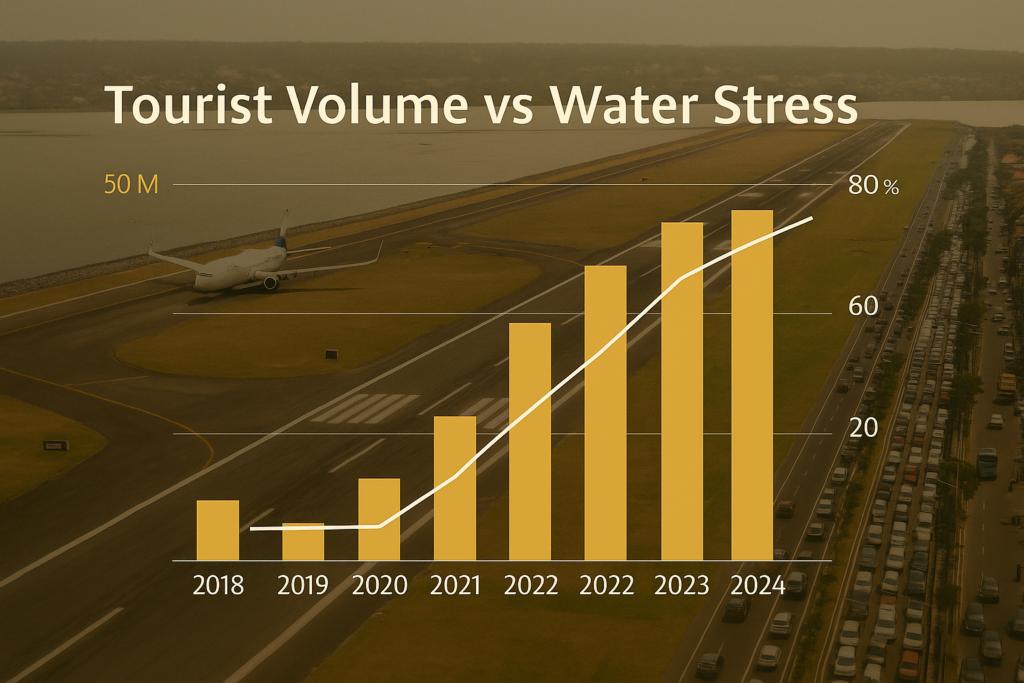
1. Why Overcrowding in Bali Tourism Is Reaching a Tipping Point
| Pressure Point | 2024 Data | Impact |
|---|---|---|
| Daily Arrivals | ≈ 60 000 (intl + domestic) | Congested roads & airports |
| Water-Table Depletion | 200 / 400 rivers drying | Hotel & villa outages |
| Plastic Waste | 3 800 t / day, <10 % recycled | Beaches & reefs polluted |
| Unregistered Villas | 55–65 % non-compliant | IDR > 1 trillion tax leakage |
Sources: Bali Tourism Board, Waste4Change, Badung Regency data, WTTC 2025 report.
2. Economic Risk of Ignoring Overcrowding in Bali Tourism
- GDP hit: Curtailing arrivals to regional averages could wipe USD 7–10 billion.
- Jobs at stake: 800 000–1 million hospitality roles.
- Tax leakage: Up to 40 % of tourists bypass accommodation tax (PHR), costing IDR 190 billion/yr.
⚠ False sense of action: A flat tourist tax without enforcement won’t solve volume or revenue leakage.
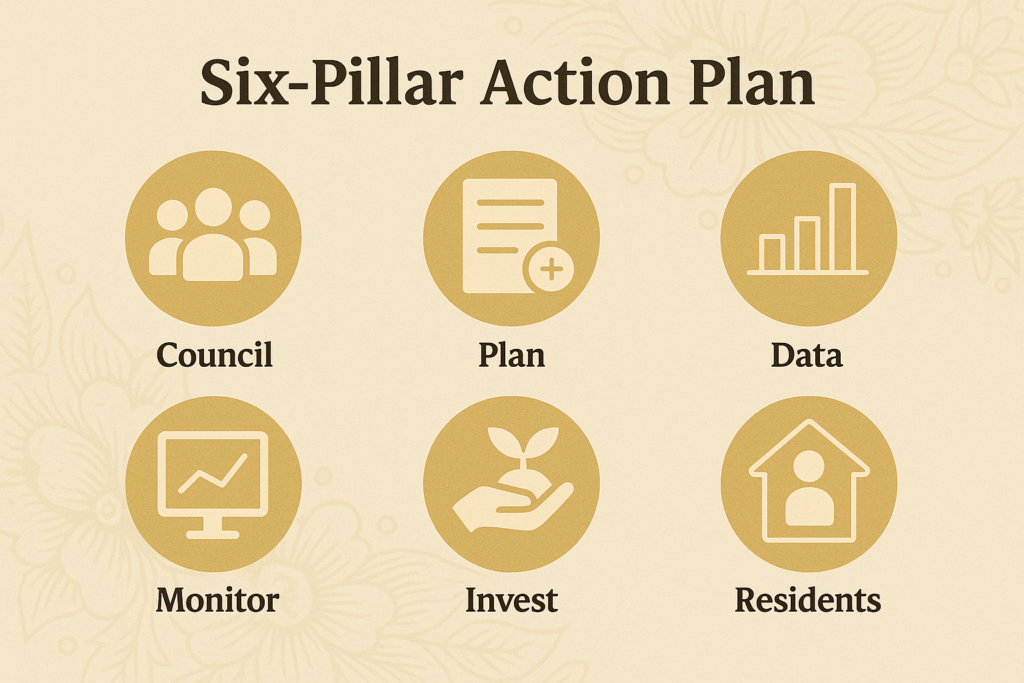
3. Six-Pillar Framework to Tackle Overcrowding in Bali Tourism
Adapted from WTTC’s “Call for Action on Destination Stewardship” (2025).
Pillar 1 – Get Organised
- Form Bali Destination Stewardship Council (BDSC) — government, tourism operators, NGOs, village heads.
- Secure legal mandate, funding, and KPI dashboard.
Pillar 2 – Make a Plan
- Produce an island-wide masterplan balancing south-coast hotspots with north/east/west diversification.
- Embed resident-satisfaction scores & environmental limits.
Pillar 3 – Gather the Evidence
- Deploy IoT sensors for visitor counts, water use & waste volume.
- Publish a monthly “overload index.”
Pillar 4 – Stay Vigilant
- Real-time dashboards for peak days; push traffic & beach-capacity alerts.
- QR-code tourism levy linked to hotel & villa check-ins.
Pillar 5 – Invest Wisely
- Ring-fence tourism revenue into water treatment, public transit, and digital permitting.
- Follow the 4 Rs: Reinvest → Ring-fence → Responsibly Spend → Report (annual audit).
Pillar 6 – Empower Residents
- Cultural-heritage programmes & SME grants.
- Quarterly town-halls with voting rights on new developments.
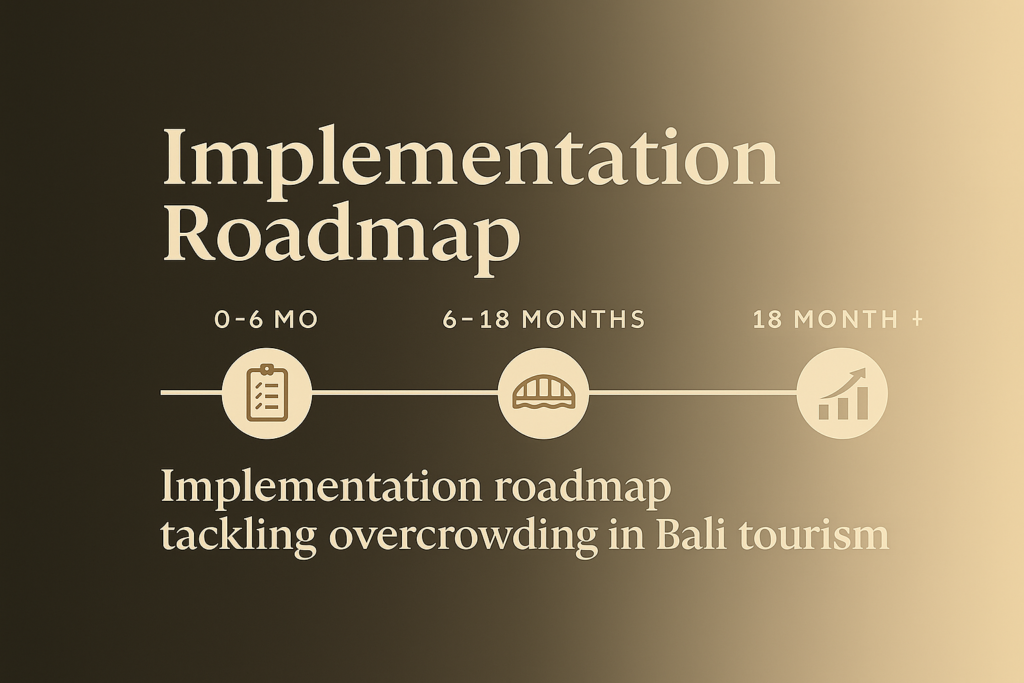
4. Implementation Roadmap for Solving Overcrowding in Bali Tourism
| Phase | Key Actions | Success Metric |
|---|---|---|
| 0–6 mo | Form BDSC, tax-compliance audit, pilot IoT counters | Council charter signed; +10 % villas registered |
| 6–18 mo | Launch masterplan, reinvest IDR 300 bn into infrastructure | 5 % visitor shift to under-visited regions |
| 18 mo + | Expand regional tourism; publish Resident Well-Being Index | Resident approval ≥ 80 % |
5. How Zenith Hospitality Can Help
As Bali-based advisors, Zenith Hospitality Global partners with developers, hotel groups, and governments to –
- Conduct destination-level sustainability audits
- Build data dashboards & revenue-reinvestment models
- Facilitate stakeholder round-tables and training
Explore our full consulting services or request a bespoke Overcrowding Impact Audit.
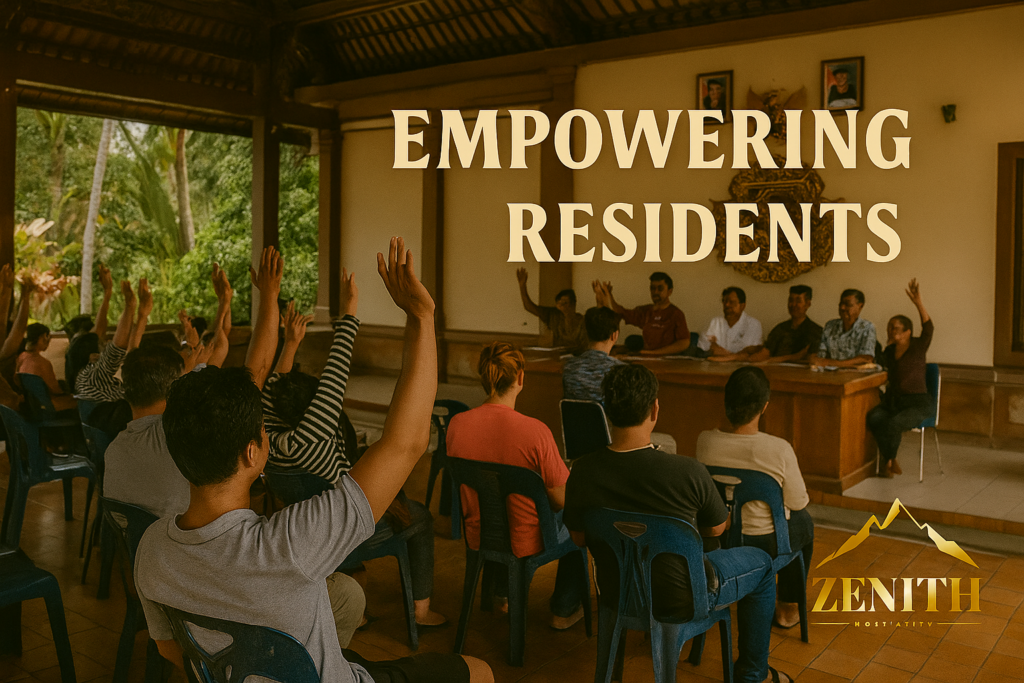
6. Conclusion & CTA
Bali’s success story is at a crossroads. Implementing this six-pillar plan will protect the island’s brand, economy, and communities — without sacrificing visitor spend.
Ready to safeguard Bali’s future?
📩 Email us for a complimentary strategy session → hello@zenith-hospitality.com
Prepared for Bali’s Travel & Tourism Stakeholders – July 2025

